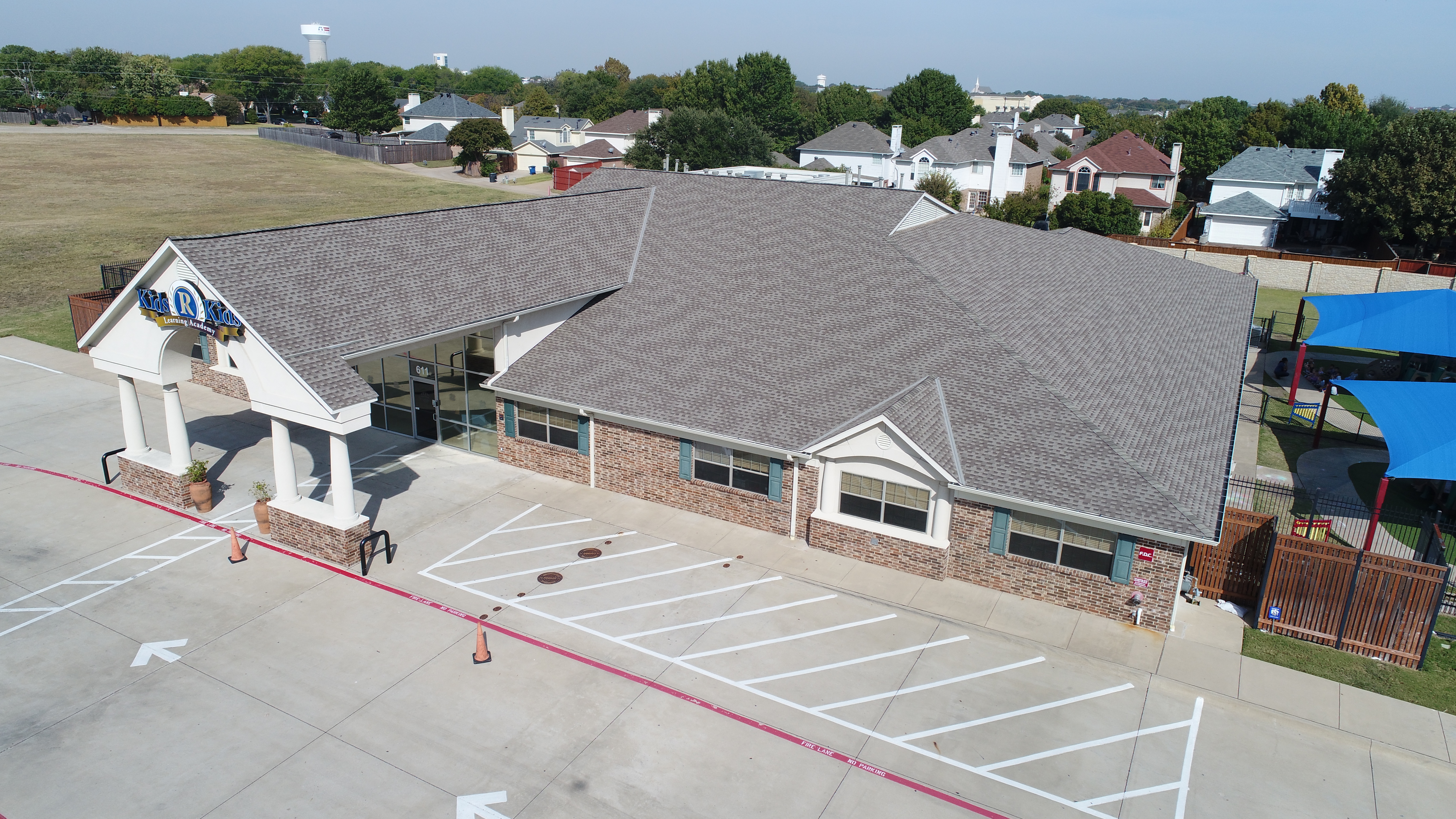
Preparing Your Home and Roof for Incoming Storms


If you’ve lived in North Texas long enough, you already know, storm season doesn’t mess around.
Between hail, high winds, and sudden downpours, your roof takes the brunt of it all.
When a storm rolls in, your home is either ready or it’s not.
The difference? Preparation.
Getting ahead of the weather isn’t about panicking or overreacting, and it’s about being smart.
Preparing your home and roof before a storm hits is one of the most important things you can do as a homeowner.
A little time spent now can save thousands in damage and avoid the stress of emergency repairs later.
In this guide, we’ll explain everything you need to know about storm prep for your home: what to check, what to avoid, and why professional help matters.
Home storm preparation is more than a seasonal task; it’s a critical part of protecting your investment and your peace of mind.
Why Storm Preparation Matters for Homeowners
Storms in Texas aren’t just loud, they’re destructive.
In fact, Texas leads the nation in hail events, with thousands of reported incidents each year.
These storms can tear up roofs, crack siding, shatter windows, and cause major leaks.
For homeowners, especially those with older roofs or homes exposed to regular weather swings, a storm can turn into a serious financial burden fast.
Many people think of preparation as something to do only when a big storm is predicted.
But the truth is, the best time to prepare is before there’s even a cloud in the sky.
Waiting until the storm is on the radar usually means it’s already too late to prevent damage.
When you take time for home storm preparation in advance, you’re not just saving money, you’re giving yourself peace of mind.
You’ll know your home has been evaluated, reinforced, and secured by professionals who understand what Texas storms can do.
Preparation also makes insurance claims easier.
If damage does occur, having documentation and a recent inspection report can make all the difference in how quickly and fairly your claim is handled.
Most importantly, it ensures the safety of your family and property. That’s why proactive steps matter.
The First Step: Professional Roof Inspection
If you do nothing else before storm season, schedule a roof inspection.
It’s the foundation of every smart storm prep plan.
And no, we don’t mean grabbing a ladder and checking things yourself.
Climbing on your roof is dangerous and can cause more harm than good. Leave that to trained professionals who know what to look for.
During an inspection, a licensed roofer will check for damaged shingles, missing flashing, soft spots, and other common problem areas.
These weak points may not cause leaks today, but they’ll be the first to fail once the wind and rain hit.
A proper inspection also includes checking gutters and drainage paths to ensure water flows away from your home.
Small clogs or misaligned downspouts can easily lead to backups, which increase the risk of water entering your attic or walls.
This is where home storm preparation really starts to make a difference.
Having a professional examine your roof gives you a clear picture of what’s working, what’s vulnerable, and what needs fixing.
The earlier this happens, the more time you have to make repairs or improvements before the next big storm.
Springtree Restoration offers thorough inspections tailored to North Texas weather conditions.
We know what local homes go through and how to keep yours ready.
Key Areas of the Roof That Should Be Checked
Not all parts of the roof are created equal.
Some areas are more likely to fail under stress from high winds and rain.
When your roofer performs an inspection, they’ll focus on the places storms love to target.
Flashing around chimneys, skylights, and vents is often the first to lift or crack. If not sealed properly, it creates a perfect entry point for water.
Roof valleys, where two slopes meet, also carry much water during storms, so any debris or damage here can lead to quick flooding.
Shingle edges, ridge caps, and the areas near eaves are particularly vulnerable in high winds.
Shingles that seem intact may already be loose, and a single gust can be enough to lift them off completely.
Once one goes, it can lead to a chain reaction.
Another often missed area is the roof's ventilation system.
Loose or broken vent covers can let in rain and even wildlife if not appropriately secured.
Gutter systems also deserve close attention; if they’re pulling away from the fascia or clogged with debris, they won’t protect your home when it matters most.
Home storm preparation means giving every part of your roofing system the attention it deserves. It’s not just about what you see but what’s happening beneath the surface.
Protecting the Perimeter of the Home
While your roof is the first line of defense, your home's exterior plays a big supporting role.
Storms can compromise windows, gutters, and siding, leading to secondary damage such as leaks, mold, and structural decay.
One of the biggest risks? Overhanging tree limbs.
Branches that seem harmless now can turn into heavy projectiles during a storm.
Even brushing against shingles in high wind can damage the surface layer, leading to early aging or water entry.
Make sure trees are trimmed at least 6 feet from the roofline, and never attempt this yourself if it involves climbing.
A tree or landscaping professional can do this safely without risking your safety or your roof.
Also, ensure gutters are firmly attached and not sagging.
Broken gutter brackets or disconnected sections cannot channel water properly, leading to overflow and potential foundation issues.
As part of your home storm preparation, walk the perimeter of your home and look for areas that could become a problem in high wind.
If it looks like it could move or fly, it should be stored or anchored.
This includes furniture, grills, and unsecured decor.
Emergency Readiness: What to Have on Hand
No matter how well you prepare, severe weather can still cause damage.
That’s why it’s smart to have a few key emergency supplies ready.
And no, we’re not talking about roofing tools or anything that puts you on a ladder.
Start with the basics: heavy-duty tarps, flashlights, batteries, portable phone chargers, bottled water, and a weather radio.
If you lose power, having access to updates and the ability to communicate is essential.
In the event of roof damage, a professional team like Springtree can perform an emergency dry-in.
This temporary fix keeps water out until full repairs can begin.
Homeowners should never attempt these patches alone; it's not safe, and it may cause more damage.
Keep essential documents in a waterproof container and know where your insurance information is located.
Another smart move is to take photos of your roof and home exterior before the storm hits, it makes insurance claims easier and faster.
Most people skip this part of home storm preparation, but it often makes the biggest difference when recovery time comes.
Be proactive, not reactive.
After the Storm: What to Watch For
Once the storm has passed, your work isn’t done.
Some of the most dangerous damage is what you can’t see.
Water intrusion, hidden roof leaks, and slow structural issues may not show up until days or even weeks later.
The first thing to do is a visual walkaround.
Stay on the ground and look for obvious signs: missing shingles, lifted edges, sagging gutters, or debris build-up.
Check ceilings and attic spaces for new stains, moisture, or musty odors.
Never climb on the roof to check for damage.
It’s not only dangerous, but you may miss or misinterpret the real issues.
A professional inspection is always the safest and most effective way to assess your roof post-storm.
Springtree offers post-storm inspections that help identify and document storm-related issues quickly.
If repairs are needed, acting fast helps prevent more damage and simplifies your insurance claim process.
Home storm preparation includes what you do after the weather clears.
Stay aware, stay off the roof, and let a pro guide your next steps.
Your Next Storm Starts with Today’s Preparation
Storm season is part of life in North Texas, but damage doesn’t have to be.
By taking steps to prepare your home and roof, you’re doing more than protecting your property.
You’re creating peace of mind for your family.
Every small action matters, from scheduling a professional inspection to securing the outside of your home and stocking up on key supplies.
Home storm preparation isn’t something to put off, and it’s something to stay ahead of.
At Springtree Restoration, we’re here to help.
Our team of experts understands the unique challenges that Texas weather presents, and we know how to prepare your home for them.
Ready to protect your roof before the next storm?
Click here to schedule your pre-storm inspection and get started with Springtree today.




